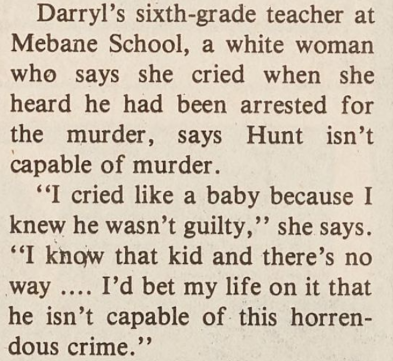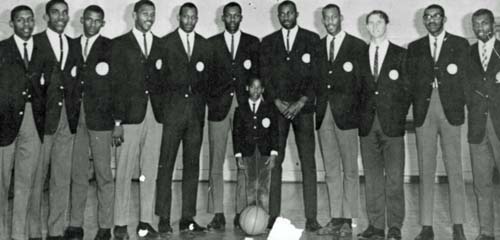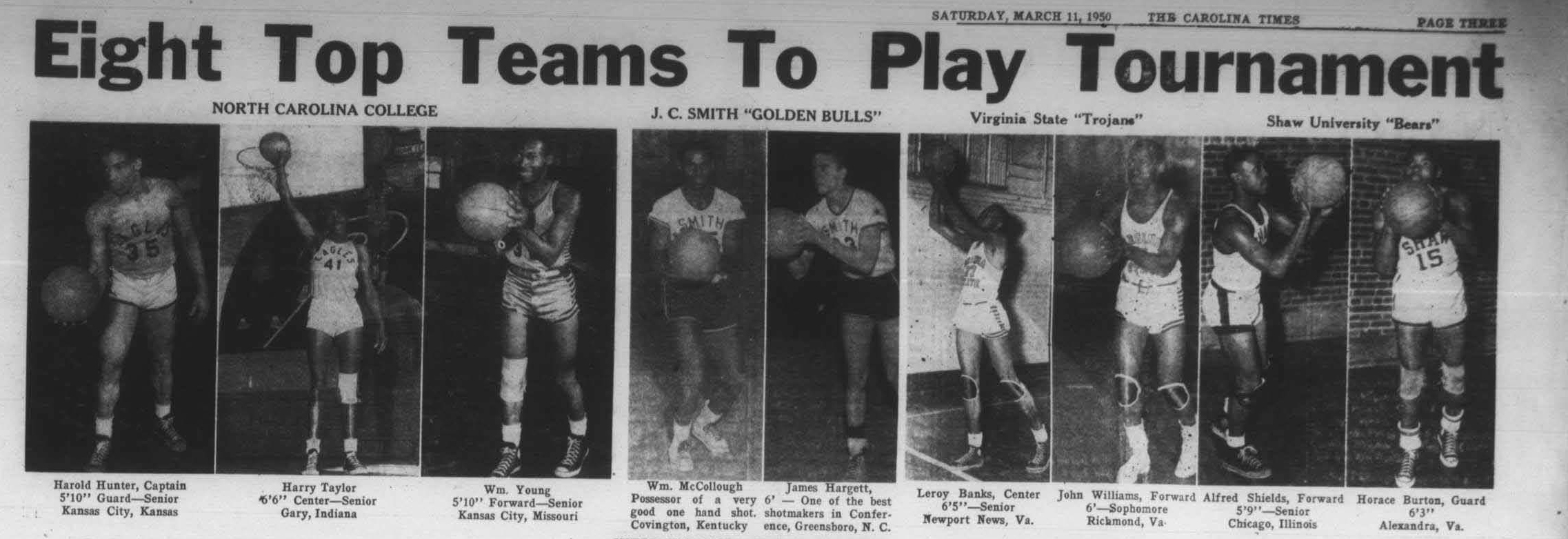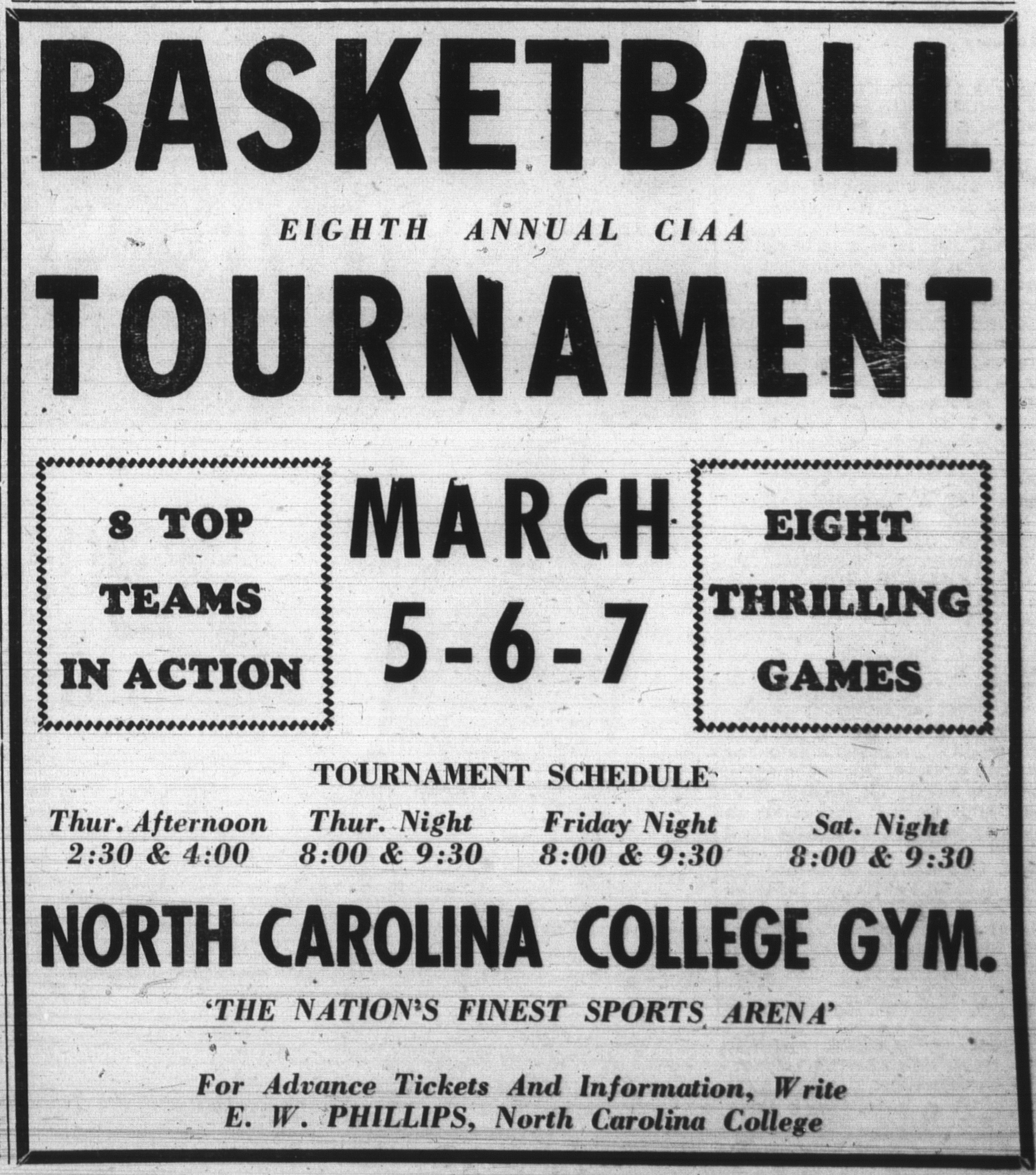Viewing search results for "Winston-Salem State University"
View All Posts
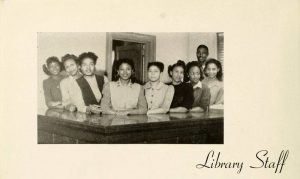
Student yearbooks from Winston-Salem State University are now available on DigitalNC. Fifty-nine volumes of the yearbook, ranging in date from 1935 to 2009, have been digitized and can be searched and viewed online. The original volumes are held by the University Archives at the C. G. O’Kelley Library.

Thanks to our partner, University of North Carolina at Chapel Hill, a batch of fill-in issues of the Winston-Salem Chronicle spanning from 1975 to 2013 are now available on our website. Included among the issues added were February 7, 1985 and June 27, 1985. These particular issues are notable for their articles written on Darryl Hunt, a Black Winston-Salem man who was falsely convicted of murdering (among other charges) Deborah Sykes in 1985.
The Winston-Salem Chronicle staff was among the many community members that voiced their concerns over the arrest of Darryl Hunt. In the February 7, 1985 issue of the paper, executive editor Allen H. Johnson writes a large, three page article on the case, using every inch of the pages to humanize Hunt and point out the inconsistencies of the case.
In the article, Johnson includes several interviews from community members and organizations such as Alderman Larry Little, Hunt’s uncle William Johnson, and the NAACP. In these interviews, many community members mention their shock and vehement disbelief that Hunt could have committed murder. Even Hunt’s sixth grade teacher was interviewed, saying: “‘I cried like a baby because I knew he wasn’t guilty,’ […] I know that kid and there’s no way …. I’d bet my life on it that he isn’t capable of this horrendous crime.'”
Despite inconsistencies, lack of concrete evidence, and efforts by the community, Hunt was convicted and sentenced to life in prison on June 14, 1985. In 1989 however, the North Carolina Supreme Court overturned the previous conviction due to the original prosecutors introducing false statements made by Hunt’s at-the-time girlfriend which she recanted before the initial trial. On appeal, Hunt was released on bond and offered a plea bargain where he would be sentenced to the time he had already served (five years) for a guilty plea. Hunt rejected the bargain and went through a retrial. He was again convicted and sentenced to life in prison.
After the second conviction, Hunt’s attorneys Mark Rabil and Ben Dowling-Sendor filed for the DNA gathered from the crime scene to be tested. The results came back in October of 1994 and determined that the DNA did not match Hunt’s. Despite the results, requests for an appeal were rejected. The reasoning given for the denied appeal was that new evidence was not absolute proof that Hunt was not involved.
Ten years after learning that the DNA did not belong to Hunt, authorities ran the crime scene DNA through the state’s database. It was discovered that the DNA actually belonged to Willard E. Brown, a man who was already incarcerated for another murder. Finally, after serving 19 years in prison, Darryl Hunt was exonerated on February 6, 2004.
To read more issues of the Winston-Salem Chronicle, please click here.
To view more newspapers from across North Carolina, please click here.
To learn more about the University of North Carolina at Chapel Hill, please visit their website.
Information about the Darryl Hunt case was gathered from Phoebe Zerwick’s Beyond Innocence: The Life Sentence of Darryl Hunt, the Innocence Project, and DigitalNC graduate assistant Sophie Hollis.
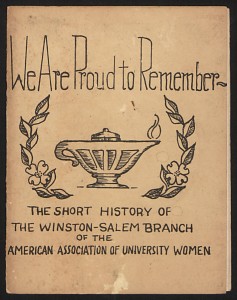 Women’s history features prominently in newly digitized items from Forsyth County Public Library. The materials come from four groups: the American Association of University Women, the Winston-Salem Junior Woman’s Club, the Junior League of Winston-Salem, and the League of Women Voters of Winston-Salem Forsyth County. Though similarly named, each of the four groups operated with distinct objectives and activities.
Women’s history features prominently in newly digitized items from Forsyth County Public Library. The materials come from four groups: the American Association of University Women, the Winston-Salem Junior Woman’s Club, the Junior League of Winston-Salem, and the League of Women Voters of Winston-Salem Forsyth County. Though similarly named, each of the four groups operated with distinct objectives and activities.
These materials from the Winston-Salem chapter of the AAUW date from 1948 to 2006. They cover the history and manifold activities of the branch since its founding in 1914. The items — including newsletters, by-laws, meeting minutes, membership directories, reports, brochures, and photographs–document the AAUW’s work to promote the equality and success of women in North Carolina.
Of particular note is the History of the North Carolina State Division American Association of University Women, 1927-1947, compiled and written by Carrie B. Wilson, club historian. Although the report primarily focuses on the history of the organization on a state level, it does include brief notes on the individual chapters that preceded the state division.
Selected annual books chronicle the activities of the Woman’s Club from 1930-2013. Each yearbook includes a roster, list of board members, and other assorted club information–including a song called “The Clubwoman’s Hymn.”
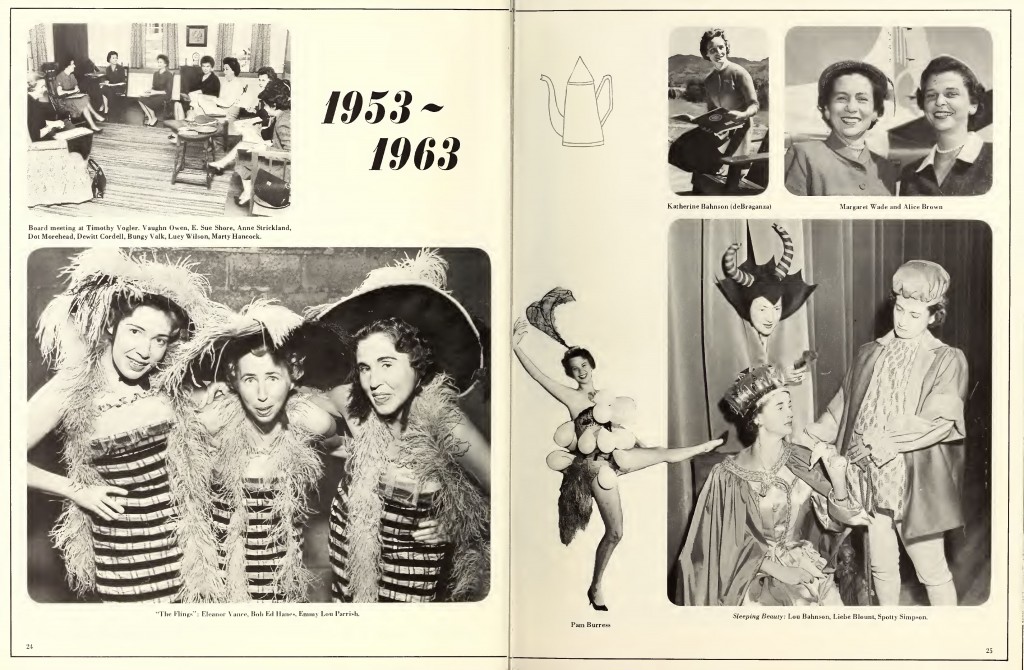
The Junior League of Winston-Salem – 50th Anniversary Newssheet
In 1923, the Junior League of Winston-Salem became the first North Carolina chapter of the Association of Junior Leagues of America. The women of the organization devoted themselves to improving the lives of women and families through voluntarism of all types. Their efforts are documented in the annual reports, newsletters, brochures, and programs from performances and events; these digitized materials date from 1923 through 1996. The 50th and 60th anniversary editions of the chapter’s newsletters in particular are great resources for anyone interested in the League’s activities and early Winston-Salem history.
Over forty years of bulletins (1952-1992) comprise the bulk of these materials. The newsletters document the various political, social, educational, and local issues of concern to League members over the years. Also included is hand-drawn sheet music and lyrics for a club song called We Are The League and information from the group’s annual meetings.
To browse all materials from Forsyth County Public Library, including photographs from early Winston-Salem African American schools, please click here.
Big news for alumni of public universities in North Carolina: student yearbooks from all 15 University of North Carolina system universities are now freely available online. Yearbooks for 14 of the schools have been digitized by the North Carolina Digital Heritage Center and are available in the North Carolina Yearbooks collection on DigitalNC, while yearbooks from North Carolina State University are available through the excellent Historical State digital collection.
These yearbooks are terrific resources for students and alumni, as well as anyone interested in the evolution of higher education and student life in 20th-century North Carolina. There are a total of 774 volumes available from these schools, ranging in date from 1890 (
The Hellenian, at UNC-Chapel Hill) to the present.
Pick your alma mater or hometown school from the links below and start browsing:
Genealogists are probably our biggest users here at DigitalNC. We love the blog we’re highlighting today because it gives us some great insight into some of the finds one particular genealogist is making using DigitalNC. Taneya Koonce is a fellow information science professional and also an avid genealogist. On her personal blog, Taneya’s Genealogy Blog, she chronicles her work to trace her family’s history and the resources she uses to do so.
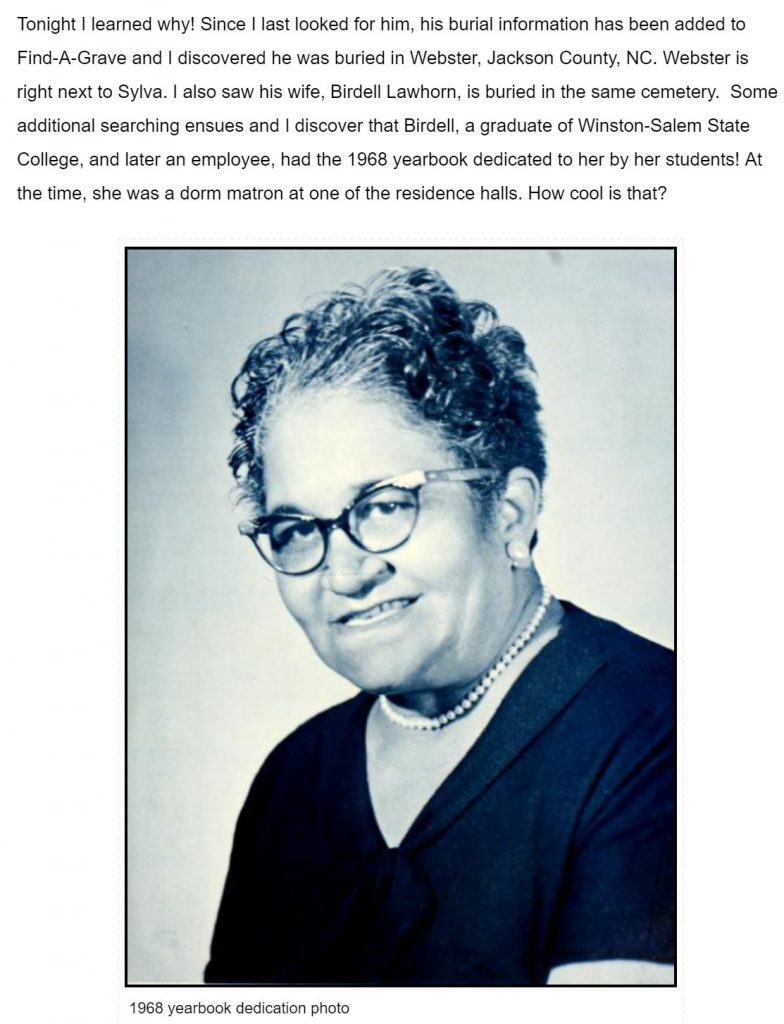
A really great example of the way Ms. Koonce has used DigitalNC for her research is her post titled “And Now I Know Why” which shows how she traced why her great grandfather’s brother died in Sylva, NC, a place the family had not had any obvious connections to, which involved looking at yearbooks from Winston-Salem State University and their student newspaper, both of which can by found on Winston-Salem State University’s partner page.
To see more posts about Ms. Koonce’s use of DigitalNC in her family history research, view all the posts tagged DigitalNC here.
If you have a particular project or know of one that has utilized materials from DigitalNC, we’d love to hear about it! Contact us via email or in the comments below and we’ll check out. To read about other places on the web that feature content from DigitalNC, check out past blog posts here.
Mascots are a complicated phenomenon. They inspire a spectrum of reactions: ridicule, ambivalence, or fierce loyalty. With thousands of yearbooks online, all of us here at the Digital Heritage Center have probably spent more time looking at yearbooks than anyone else you’re likely to meet. Mascots are a common theme.
I’ve been working on today’s post for quite some time; unable to find a history or comprehensive list of mascots in North Carolina I decided to compile one myself. So here’s a stab at a college mascot overview, drawn from yearbooks and other campus publications. Let me know what I’ve missed or gotten wrong!
Children
In the early 20th century, schools frequently chose children as mascots or sponsors, whether for a sports team or for a particular class. The earliest example we’ve found on DigitalNC is from a 1910 publication by Atlantic Christian College (now Barton College) in Wilson, which shows Elizabeth Settle Caldwell as the Senior Class sponsor.
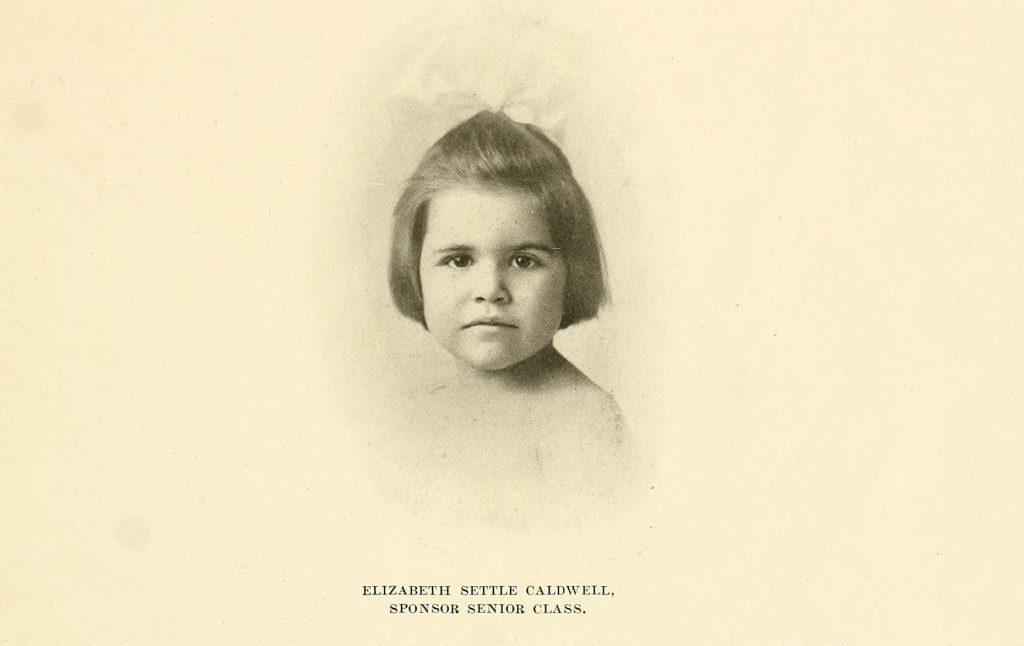
Elizabeth Settle Caldwell, First North Carolina Mascot? From the 1910 Pine Knot yearbook, Atlantic Christian College.
Ms. Caldwell was the daughter of Jesse Cobb Caldwell, the college president. From what we’ve been able to tell, children mascots were frequently younger siblings of students, teachers, or others associated with the school. Students mention that Ms. Caldwell brought “solace to many a lonely, homesick heart” and this may be why children were chosen – to foster a feeling of family and comfort among students. We’ve seen several references to mascots being elected or being chosen through competition, although what this might be we haven’t been able to discover. The trend of choosing children as mascots seems to continue through the 1960s. The latest one we found is Dawn, the Senior Class mascot at Peace College (now William Peace University) in 1966.
Animals
Animal mascots span schools across the state, whether it’s Rameses at UNC-Chapel Hill or WCU’s Catamount. The bulldog and different types of cats win out as most frequently adopted. Pictures of live animal mascots start to appear in yearbooks in the early 1900s, and continue today although much less frequently. For a variety of reasons, including concerns expressed by animal rights activists, schools have shifted away from actual animals to students dressing up like animals, as you’ll see later on in this post.
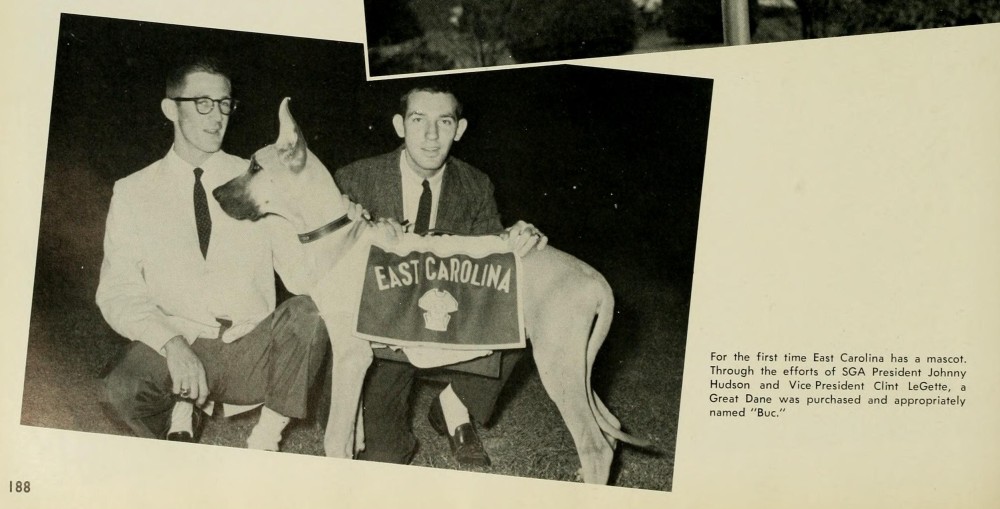
“Buc” is described here as East Carolina University’s first mascot. From the 1959 Buccaneer yearbook.
Characters
While about half of the four-year college mascots in North Carolina are animals, most of the others are characters that are historic, mythical, or extraordinary in nature. From what I’ve seen in NC yearbooks, humans dressing up as the school mascot really got traction in the 1960s. Initially, these costumes weren’t the fuzzy creations we think of today, but rather less complicated ensembles where the mascot’s identity (his or her face and body) was often apparent. Yosef the Mountaineer, beloved icon of Appalachian State University, was created sometime around 1942 and looked like this in the 1960s:
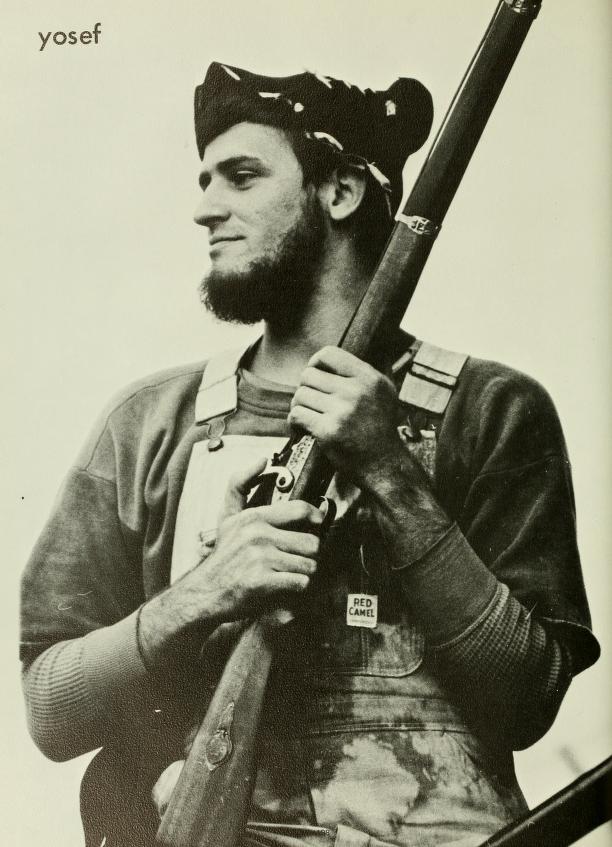
Yosef the Mountaineer, aka James Randle Tedder (we think). From the 1969 Rhododendron yearbook, Appalachian State University.
One of my favorites has to be this picture of Duke Blue Devil, from 1950:
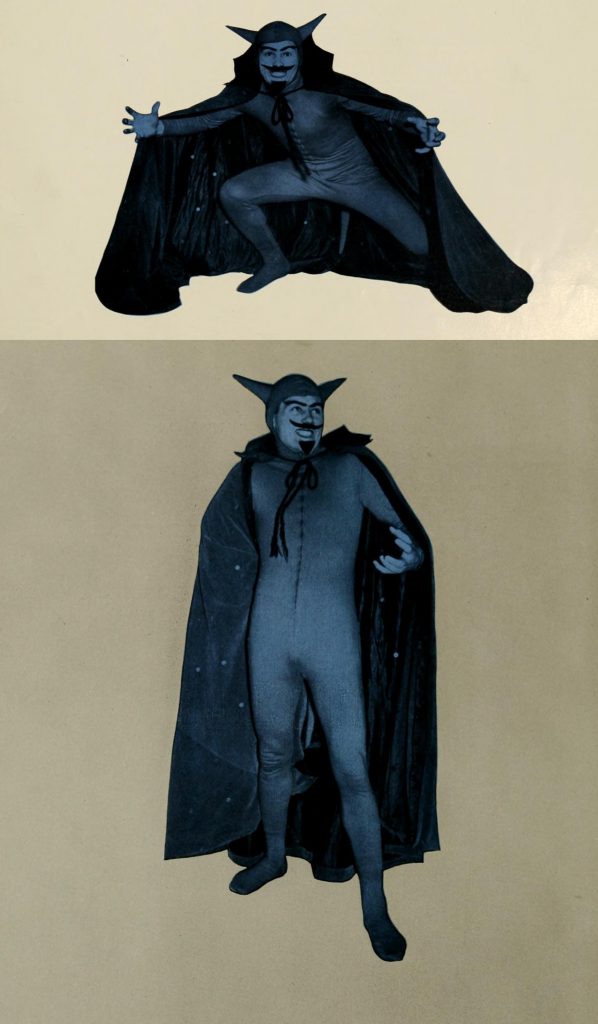
The Blue Devil. From the 1950 Chanticleer yearbook, Duke University.
Perhaps it was too hard to maintain a degree of consistency as students graduated over the years, and mascot anonymity seemed like a better idea. Whatever the reason, you start to see fuzzy, oversized costumes with gigantic headpieces in the late 1970s.
The Big Costumes
Whether animal or character, plush mascots that include a single piece body suit with a large plastic or cloth-covered head is something most Americans can identify with, thanks to professional sports. Colleges in North Carolina really embraced these costumes through the 1980s. Here’s what the UNC-Wilmington Seahawk looked like in 1987:

The Seahawk. From the 1987 Fledgling yearbook, UNC-Wilmington.
Some schools have developed multiple mascots dedicated to different audiences. It seems like the difficulty with these types of costumes is how to pull off a fierce facial expression that doesn’t come off as goofy or too scary for children. I think this picture from Davidson College sums it all up:
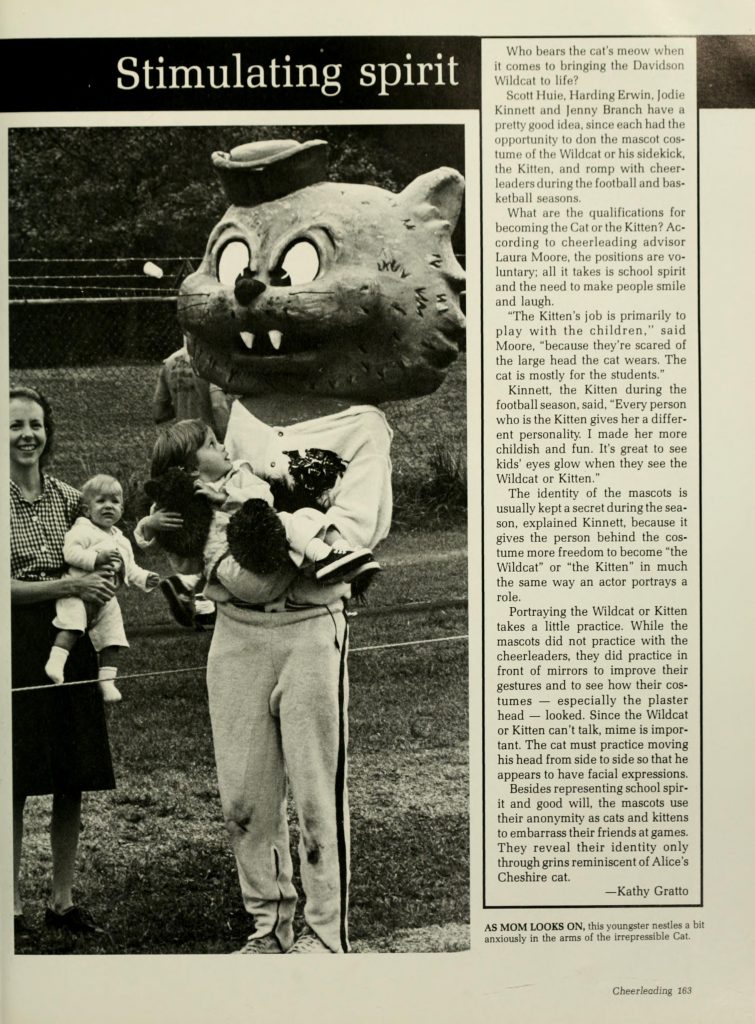
The Davidson Wildcat and … friends. From the 1983 Quips and Cranks yearbook.
I will also take this opportunity to mention a mascot that routinely makes the “wait … what?” list – the Campbell University Fighting Camels:
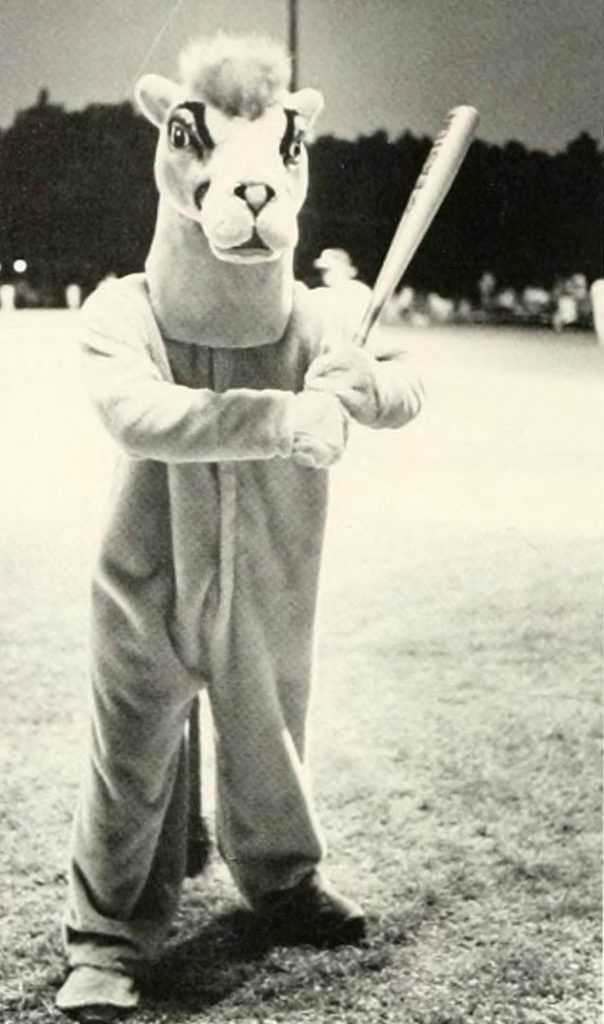
The Campbell Camel. From the 1983 Pine Burr yearbook.
Even the humans and human-like creatures are clothed in oversized costumes these days. Wake Forest University’s Deacon is a dapper chap:
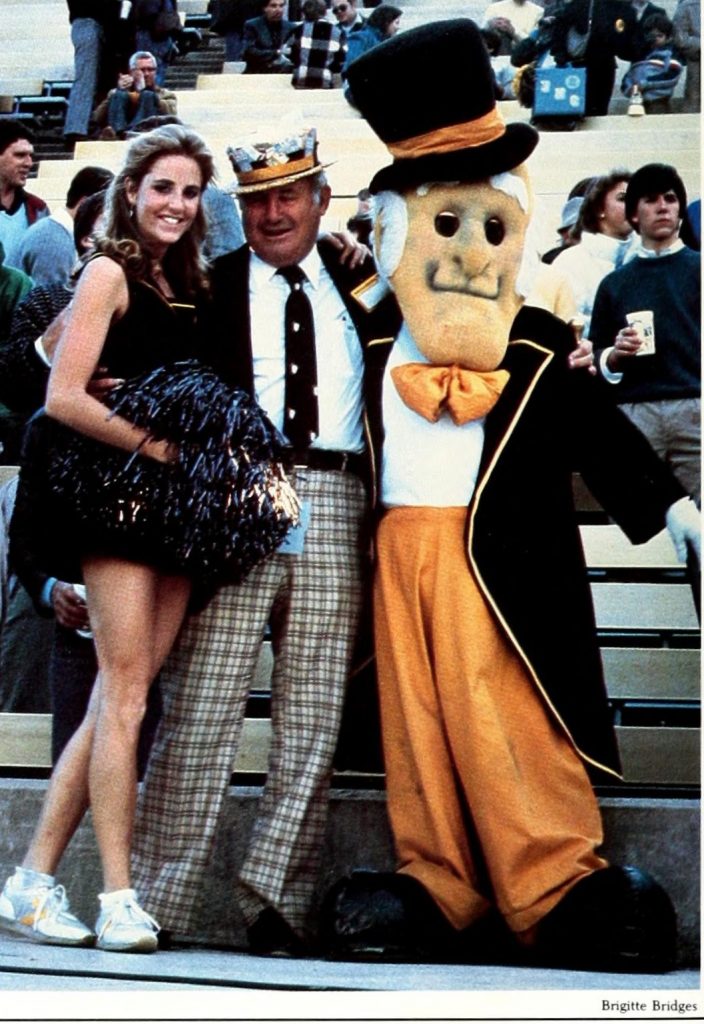
Wake Forest’s Deacon poses with fans. From the 1985 Howler yearbook.
In addition to the Demon Deacons and the Blue Devils, North Carolina boasts a number of other spiritual mascots: North Carolina Wesleyan’s Battling Bishops, Belmont Abbey’s Crusaders, and Guilford College’s Quakers. Meredith College’s teams are known as the Avenging Angels (formerly just the Angels). While Elon University’s mascot is now the Phoenix, before 2000 they were the Fighting Christians:
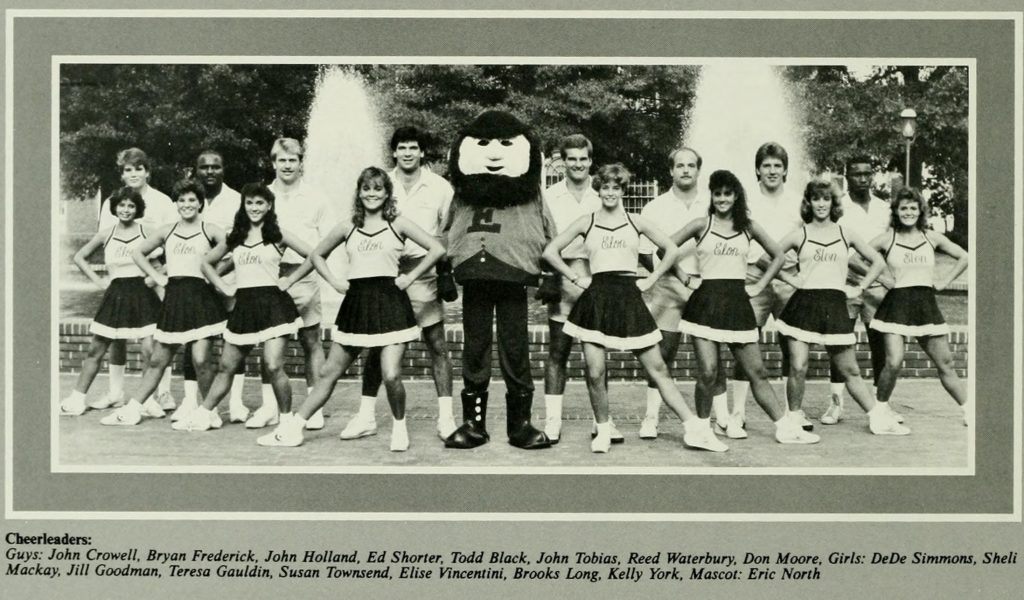
The Elon Fighting Christian mascot with cheerleaders. From the 1986 Phi Psi Cli yearbook.
Two schools break with the animal/human tradition in North Carolina. The Brevard College Tornadoes and the Louisburg College Hurricanes. Weather phenomena mascots are always difficult to pull off. I couldn’t find one for Brevard, but Louisburg, which currently has a bird mascot, had “Louie” up until 2006:
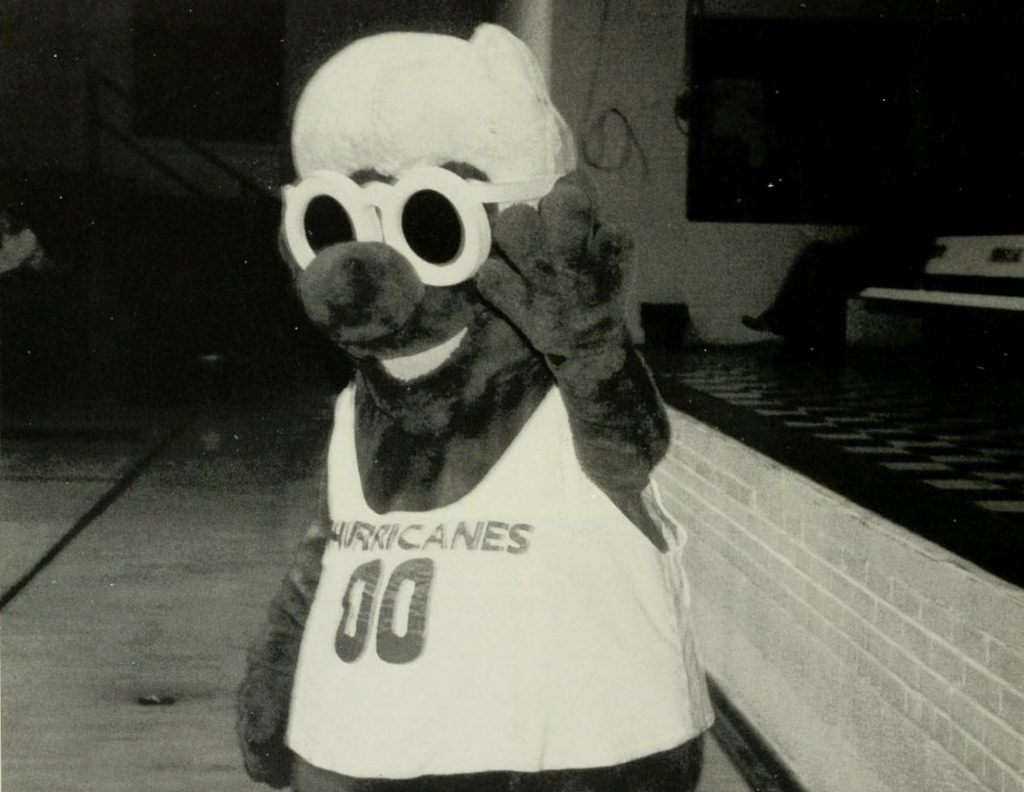
Louie, the former Louisburg College Hurricanes mascot. From the 1996 The Oak yearbook.
Who knows when the next mascot sea change will happen. Below is a list of mascots in North Carolina; let us know if we got anything wrong. Which one is your favorite?
| School |
Mascot |
Notes |
| Appalachian State University |
Yosef the Mountaineer |
First appeared in the yearbook in 1942 |
| Barton College |
Bulldog |
|
| Belmont Abbey College |
Crusader |
|
| Bennett College |
|
Known as the Bennett Belles |
| Brevard College |
Tornado |
|
| Campbell University |
Fighting Camels |
The Hornets in the 1920s-1930s |
| Catawba College |
Catawba Indian |
|
| Chowan University |
Hawks |
The Braves until 2006 |
| Davidson College |
Wildcats |
Also a bulldog (1929) and a bobcat (1939) |
| Duke University |
Blue Devil |
|
| East Carolina University |
Pirates |
Formerly Pee Dee the Pirate |
| Elizabeth City State University |
Vikings |
|
| Elon University |
Phoenix |
The Fightin’ Christians until 2000 |
| Fayetteville State University |
Broncos |
|
| Gardner-Webb University |
Runnin’ Bulldogs |
|
| Greensboro College |
The Pride |
Formerly the Hornets |
| Guilford College |
Quakers |
|
| High Point University |
Panthers |
|
| Johnson C. Smith University |
Golden Bulls |
|
| Lees-McRae College |
Wily the Bobcat |
|
| Lenoir-Rhyne University |
Joe and Josie Bear |
|
| Louisburg College |
Hurricanes |
|
| Mars Hill College |
Mountain Lion |
|
| Meredith College |
Avenging Angels |
Formerly the Angels |
| Methodist University |
Eagles |
|
| Montreat College |
Cavaliers |
|
| Mount Olive College |
Trojans |
|
| North Carolina A&T |
Aggie Dog (Bulldog) |
|
| North Carolina Central University |
Eagles |
|
| North Carolina State University |
Wolfpack |
|
| North Carolina Wesleyan College |
Battling Bishops |
Formerly the Circuit Riders |
| Peace College |
Pacer |
|
| Pfeiffer University |
Falcons |
|
| Queens University of Charlotte |
Rex the Royal |
|
| Saint Augustine’s University |
Mighty Falcons |
|
| Salem College |
Spirits |
|
| Shaw University |
Bears |
|
| St. Andrews University |
Knights |
|
| UNC Asheville |
Bulldog |
|
| UNC Chapel Hill |
Rameses the Ram |
Also known as the Tar Heels |
| UNC Charlotte |
Norm the Niner |
|
| UNC Greensboro |
Spartans |
|
| UNC Pembroke |
Braves |
|
| UNC Wilmington |
Seahawk |
|
| UNC School of the Arts |
Fighting Pickle |
|
| UNC School of Science and Math |
Unicorn |
|
| Wake Forest University |
Demon Deacons |
|
| Warren Wilson College |
Owls |
|
| Western Carolina University |
Catamount |
“Paws” |
| Wingate University |
Bulldog |
|
| Winston-Salem State University |
Ram |
|
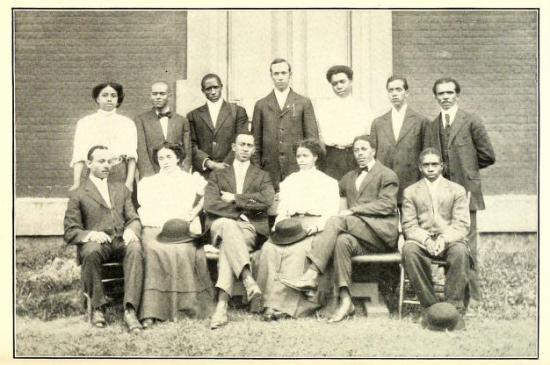
Students at Shaw University, 1911.
With the recent addition of student yearbooks from Livingstone College, DigitalNC now hosts historic materials from ten different Historically Black Colleges and Universities in North Carolina. These materials document more than a century of African American higher education in North Carolina. From our earliest projects in 2010 to the present, the North Carolina Digital Heritage Center has worked closely with libraries and archives at historically Black colleges around the state, and we continue to add materials from these collections on a regular basis. Follow the links below to browse yearbooks, newspapers, photos, scrapbooks, and more materials by school.
Bennett College (Greensboro)
Elizabeth City State University
Fayetteville State University
Johnson C. Smith University (Charlotte)
Livingstone College (Salisbury)
North Carolina A&T (Greensboro)
North Carolina Central University (Durham)
Saint Augustine’s University (Raleigh)
Shaw University (Raleigh)
Winston-Salem State University
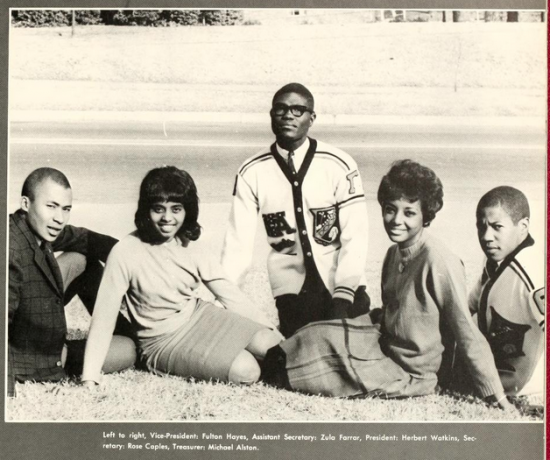
Sophomore class officers at North Carolina Central University, 1963.
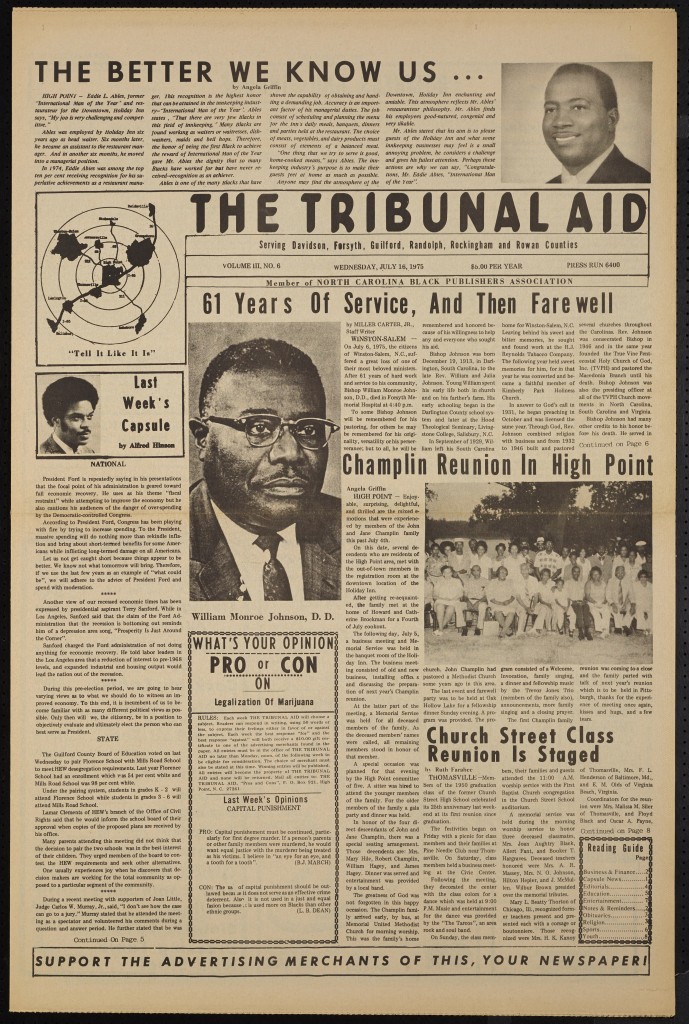
The Tribunal Aid, July 16, 1975
- Simply be a newspaper: report, inform, and editorialize
- Serve all people
- Remain neutral
These are the goals and aspirations of The Tribunal Aid, stated above the masthead in its very first issue. In partnership with the High Point Museum and the paper’s publisher, the entire run of this newspaper, which documented the African American community from 1973-1976, is now available on DigitalNC.
The Tribunal Aid really ranges from the very local to the broad in scope. The paper solicited submissions from High Point and surrounding areas, and is a rich source of local information about events as well as personal milestones (marriages and births, for example). There’s quite a bit of information from Historically Black Colleges and Universities (Livingstone, North Carolina A&T University, and Winston-Salem State University). On a national and state level you’ll find coverage of well-known news items of the 1970s, like the Nixon impeachment, America’s Bicentennial, and North Carolina’s Eugenics Commission.
One of the hallmarks of this paper is its ongoing and rigorous efforts at getting its readership engaged. There are a number of recurring editorials like “The Point Is…” and “To Be Equal,” which argue for free expression as well as active participation in political and community affairs; editorials are shared under the tagline “You’re a part of the solution, or you’re a part of the problem.” Another regular feature throughout 1975-1976 is “The Better We Know Us…” biographies of local African Americans that appear above the masthead and which helped describe African American citizens having an impact on local life. Some issues of the paper have Pro / Con polls, asking readers to weigh in on topics that are still weighty today, like legalization of marijuana (see right) and capital punishment.
This paper joins a growing collection of items related to the history of High Point, shared by the High Point Museum as well as other institutions in that city. You can view them all here.
The Central Intercollegiate Athletic Association (CIAA), founded in 1912, is celebrating its centennial as basketball teams from twelve member institutions and fans gather today in Charlotte to kick off the annual tournament.
This article from today’s News & Observer tells the story of the CIAA basketball conference.
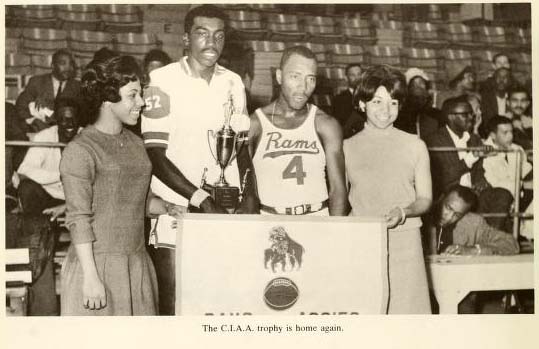
Earl “The Pearl” Monroe and others. The Winston-Salem State College Rams brought home the CIAA trophy in 1967. Image from the 1967 volume of “Red and White,” the Winston-Salem State University student yearbook.
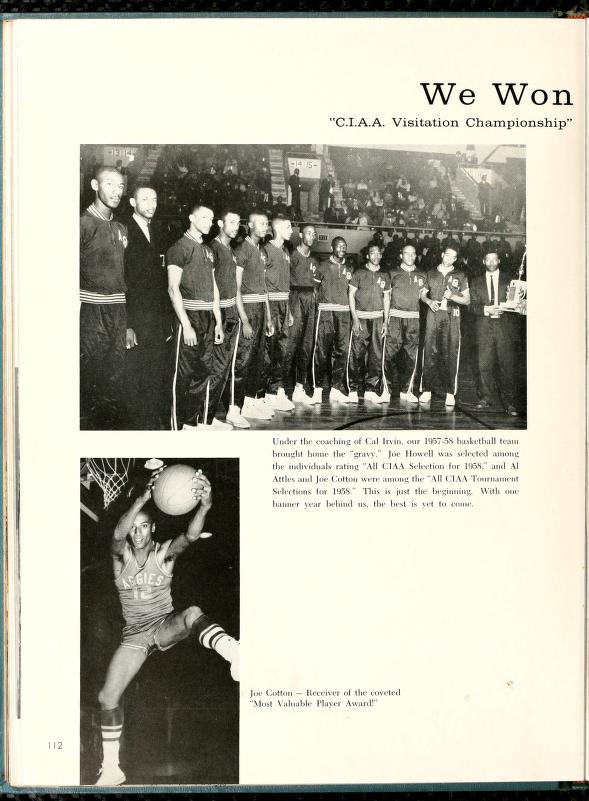
Page from the 1958 edition of “The Ayantee,” North Carolina Agricultural and Technical University’s student yearbook, depicting that year’s CIAA championship team.
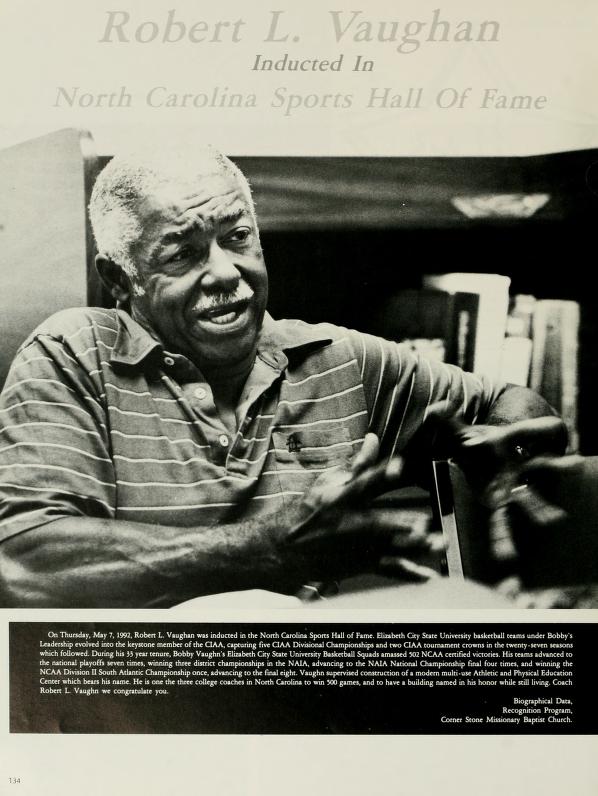
In 1992, Elizabeth City State University basketball coach Bobby Vaughan was inducted into the North Carolina Sports Hall of Fame. Under Vaughan’s leadership, the basketball team won five CIAA Divisional Championships and two CIAA tournaments. Image from the 1992 volume of “The Viking,” the Elizabeth City State University student yearbook.
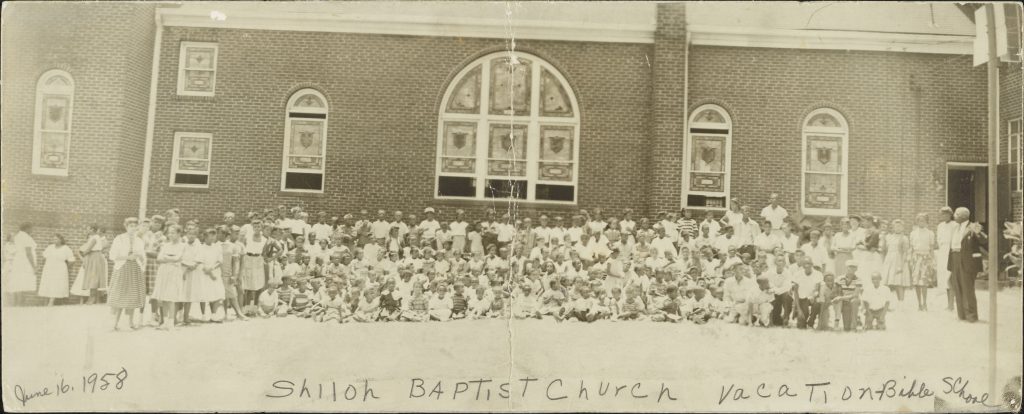
A group photograph taken at Shiloh Baptist Church’s Vacation Bible School. June 1958.
We have added materials that capture some of Winston Salem’s rich African-American history from 1930 to 1990, courtesy of the Winston Salem African American Archive.
Included in this batch are several editions of The Columbian, the student newspaper for Columbian Heights High School, and articles from other local papers highlighting notable community members and events.
One such community member, Joseph Bradshaw was a veteran, social worker, educator and local historian, committed to preserving Black history in the city and beyond. Other articles detail firsts in Winston Salem’s African-American community: William Samel Scales opened the first Black-owned bonding agency and later served as the president of Forsyth Savings and Trust. Naomi McLean opened the first Black business and stenographer school in Winston Salem. Carl Matthews began the Winston-Salem sit-in on February 8, 1960. Other articles detail the 1947 Local 22 Tobacco Workers strike at the R.J. Reynolds Factory.
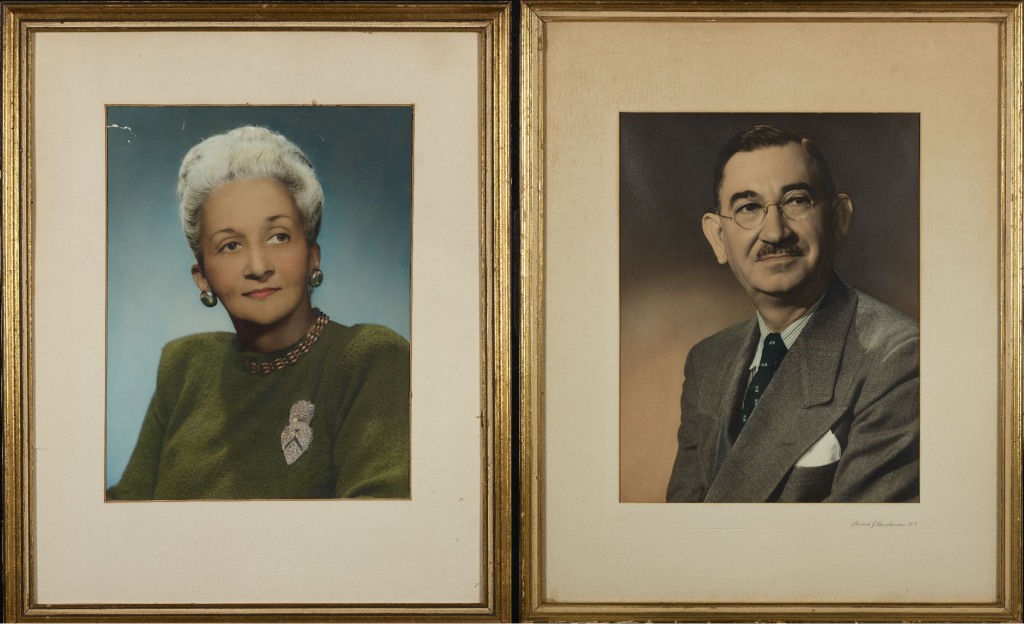
Color portraits of Mrs. Mary Hairston and Dr. Rufus S. Hairston. Dr. Hairston was Winston Salem’s first African-American pharmacist.
Also included in these materials are color portraits of Dr. and Mrs. Rufus S. Hairston and a scrapbook of materials collected by Mrs. Hairston. The Hairstons were both alumni of Slater Industrial Academy, now known as Winston Salem State University, and active members of their community. Dr. Hairston was Winston Salem’s first African-American pharmacist, an alumnus of Shaw University, president of the National Pharmaceutical Association, and was appointed WSSU’s first alumni board of trustee member. Mrs. Hairston served as one of the first presidents of the Winston Salem Chapter of Moles, a national professional organization of women of color, and was a founding member of the Winston Salem Chapter of The Links, Inc. She was also involved in the development of Winston Salem’s first library for African-Americans and later worked in the WSSU library.
To learn more about the Winston Salem African American Archive, visit their website or partner page.



